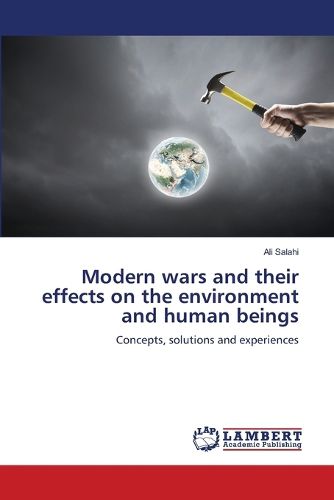Readings Newsletter
Become a Readings Member to make your shopping experience even easier.
Sign in or sign up for free!
You’re not far away from qualifying for FREE standard shipping within Australia
You’ve qualified for FREE standard shipping within Australia
The cart is loading…






This title is printed to order. This book may have been self-published. If so, we cannot guarantee the quality of the content. In the main most books will have gone through the editing process however some may not. We therefore suggest that you be aware of this before ordering this book. If in doubt check either the author or publisher’s details as we are unable to accept any returns unless they are faulty. Please contact us if you have any questions.
While the effects of war on the environment may seem obvious, what is less apparent are the ways in which environmental damage itself can lead to conflict. In regions such as Africa, the Middle East, and Southeast Asia, factions in resource-poor areas have historically resorted to military force for material gain. As military strategies evolve, it becomes clear that the environment plays an increasingly crucial role, especially in post-conflict scenarios. Some military leaders are realizing that preserving the environment can offer more long-term benefits than destroying it. Natural resources can be key in creating jobs and opportunities in post-conflict societies. For example, when Iraq invaded Kuwait in 1990, the international community could not remain passive. After Iraq's failure to comply with UN withdrawal demands, the Iraqi government quickly experienced the consequences of Operation Desert Shield, a coalition of 34 countries. While there is universal agreement on the need to protect the environment from harmful actions, this principle has yet to fully extend to damage caused by armed conflicts.
$9.00 standard shipping within Australia
FREE standard shipping within Australia for orders over $100.00
Express & International shipping calculated at checkout
This title is printed to order. This book may have been self-published. If so, we cannot guarantee the quality of the content. In the main most books will have gone through the editing process however some may not. We therefore suggest that you be aware of this before ordering this book. If in doubt check either the author or publisher’s details as we are unable to accept any returns unless they are faulty. Please contact us if you have any questions.
While the effects of war on the environment may seem obvious, what is less apparent are the ways in which environmental damage itself can lead to conflict. In regions such as Africa, the Middle East, and Southeast Asia, factions in resource-poor areas have historically resorted to military force for material gain. As military strategies evolve, it becomes clear that the environment plays an increasingly crucial role, especially in post-conflict scenarios. Some military leaders are realizing that preserving the environment can offer more long-term benefits than destroying it. Natural resources can be key in creating jobs and opportunities in post-conflict societies. For example, when Iraq invaded Kuwait in 1990, the international community could not remain passive. After Iraq's failure to comply with UN withdrawal demands, the Iraqi government quickly experienced the consequences of Operation Desert Shield, a coalition of 34 countries. While there is universal agreement on the need to protect the environment from harmful actions, this principle has yet to fully extend to damage caused by armed conflicts.